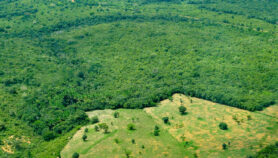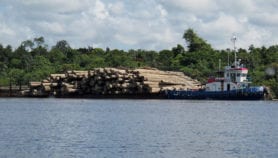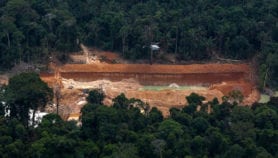By: Roman Czebiniak
Send to a friend
The details you provide on this page will not be used to send unsolicited email, and will not be sold to a 3rd party. See privacy policy.
Reducing deforestation is crucial to mitigate climate change, but it mustn‘t be used as an excuse to continue polluting, says Roman Czebiniak of Greenpeace.
World leaders are discussing whether and how to include tropical forests in the next agreement on climate change. A decision on financing Reduced Emissions from Deforestation and forest Degradation in developing countries (REDD) is expected at the Copenhagen climate negotiations at the end of this year.
Forests will be used to either bring the world closer to, or further away from, avoiding catastrophic climate change. Developing countries have the most to gain from a good deal, and the most to lose from a bad one.
Scientists have warned that a global temperature rise above two degrees Celsius would cause catastrophic damage to human livelihoods and the environment. A recent study in Nature examined a thousand different emission pathways to keeping us below this tipping point. All came to a singular conclusion: there are no shortcuts — we need to saveevery ounce of carbon we can.
Enter tropical deforestation, responsible for about 20 per cent of greenhouse gas emissions, more than that from all the cars, planes, and trains in the world. After China and the United States, Indonesia and Brazil are the world’s third and fourth largest emitters — largely due to deforestation.
Combined with an agreement to drastically reduce fossil fuel emissions, an aggressive effort to end global deforestation by 2020 would significantly increase our chances of staying below the two degrees tipping point. But while REDD offers a unique cost-effective opportunity to combat climate change, some industrialised countries are trying to use this opportunity to offset their own responsibilities.
False solutions
For example, one REDD proposal now gaining ground is the idea of including forests in carbon markets. Efforts that reduce deforestation would generate offset credits that could be sold to industrialised countries and companies. But under such a system, a forest would only be protected if a company in an industrialised country continued polluting — resulting in no net climate benefit.
Lord Nicholas Stern and other economists have argued that giving carbon a strong and stable price is the best way to reduce carbon emissions. But a recent report commissioned by Greenpeace showed that including REDD offset credits in carbon markets could crash the price of carbon by up to 75 per cent, significantly reducing incentives to invest in clean and renewable technologies in both developed and developing countries. The report described how this could "lock in" dirty technologies, making the reductions needed to stay below two degrees more costly and difficult.
The history of carbon markets like the Clean Development Mechanism (CDM) also shows that investors tend to flock to a small number of large developing countries with high emissions rates and strong capacities. Over 90 per cent of CDM benefits, for example, have gone to just four developing countries: Brazil, China, India and South Korea. The same could be expected for REDD. Furthermore, it is unclear whether many developing countries with tropical forests would be able to meet market participants’ strict monitoring, reporting, and accounting standards.
New hope
Several innovative alternativeproposals for a global Fund for Forests would guarantee forest financing worth tens of billions of dollars per year and avoid the problems of carbon market offsets. Consistent with the polluter pays principle, demanding that countries and companies pay for just five per cent of their carbon permits (which they currently receive for free) could raise US$20 billion per year. A 0.6 per cent levy on international transport could raise similar amounts.
What is needed is a flexible approach that gets as many countries with tropical forests involved as quickly as possible. A global fund could cater for countries at different stages of development, and offer financing to nations with both high and low deforestation rates, as well as those with varying capacities and needs. National-level approaches to REDD would also avoid the problems of "sub-national" (or project-based) methods that just shift deforestation from one area to another.
Priority should be given to developing countries that take aggressive action towards zero deforestation and degradation in a way that promotes biological diversity and respects the rights of local and indigenous peoples.
The time is now
Recent scientific studies have shown that failing to stay below a two degree rise in global temperatures could result in significant losses of major tropical forests through increased fires, droughts, and infestations. To save the climate, we must protect the forests. And to save the forests, we must protect the climate.
REDD is a necessary ingredient for any formula for staying below two degrees. But, if simply applied in carbon markets, it could also give industrialised countries a way of delaying progress towards that goal. The decision on REDD will have enormous implications not just for developing countries with tropical forests but for those countries most vulnerable to climate change effects. Developing countries’ position on forests could be the key to whether we succeed or fail in the fight against catastrophic climate change.
Roman Czebiniak is a policy advisor on climate change and forests for Greenpeace International.













